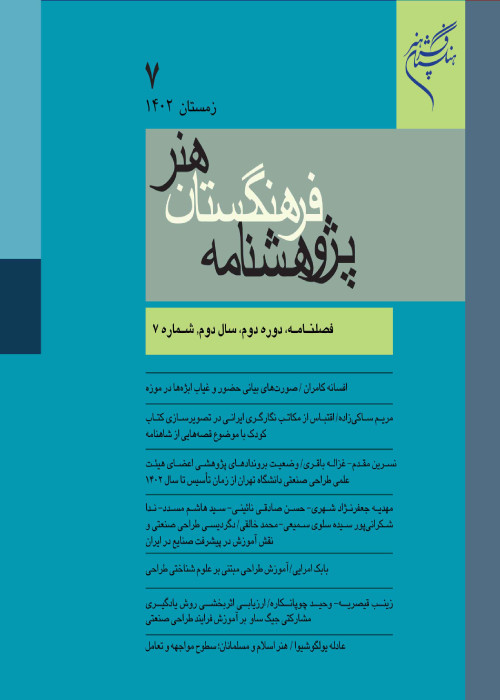The Representation of Photography in Abu Torab Ghaffari's Illustrations in Sharaf Newspaper with Hypertextual Approach
The invention of photography in the 19th century in France coincides with the ruling of the Qajar dynasty in Iran, which lasted from 1785 to 1925. The early cameras were brought to Iran not a long time after their invention in Europe; Iranian aristocrats, court men, princes and even the king began to take photos. Photo albums deeply changed the traditional vision of Iranian artists with fundamental shifts occurring in visual arts. Many paintings were directly copied from photos with some omitted or added details. On the other hand, the print industry not only allowed ordinary people to access significant amounts of texts and images, but also caused fundamental changes in the methods of artistic expression. Many newspapers were published in this period and the printed press influenced the spread of the ideas of the Constitutionalist as well as royal messages to the public. Coming from a family of artists, Abu-TorabKashani was a famous court painter. He illustrated about one hundred and fifty lithographic works for a newspaper called Sharaf, which had a distinguished status among State papers. The drawings were mainly portraits court men. He also illustrated many familiar monuments and landscapes. It is evident that Abu-Torab Ghaffari was strongly inspired by photos and usually took advantage of them for his artistic purposes. Exploring ways in which Abu-Torab utilised photos in his illustrations is the main aim of this research. The research method is descriptive based on the intertextual approach of Gerard Genette. It was Julia Kristeva in the 1960s who first used the term ‘Intertextuality’, to indicate any relation between different texts.Thereafter, Gerard Genette expanded on Kristeva, and called the relation between a text and others as ‘transtextuality’, andclassified it into five categories of which intertextuality was only one. A selection of relevant exampleshas been collected here, and their similarities and differences have been explored. Kashani applied methods such as elimination, addition, relocation, detailing, and sharpening for creating a new work of art derived from photos.
- حق عضویت دریافتی صرف حمایت از نشریات عضو و نگهداری، تکمیل و توسعه مگیران میشود.
- پرداخت حق اشتراک و دانلود مقالات اجازه بازنشر آن در سایر رسانههای چاپی و دیجیتال را به کاربر نمیدهد.


